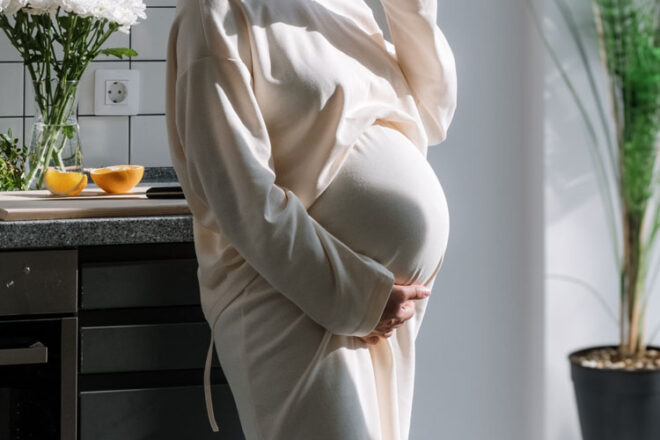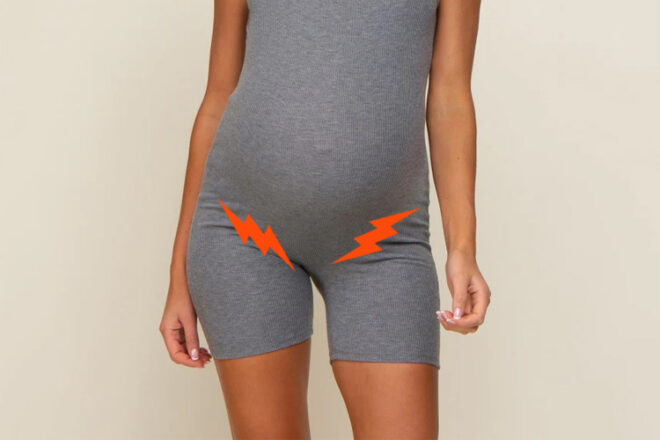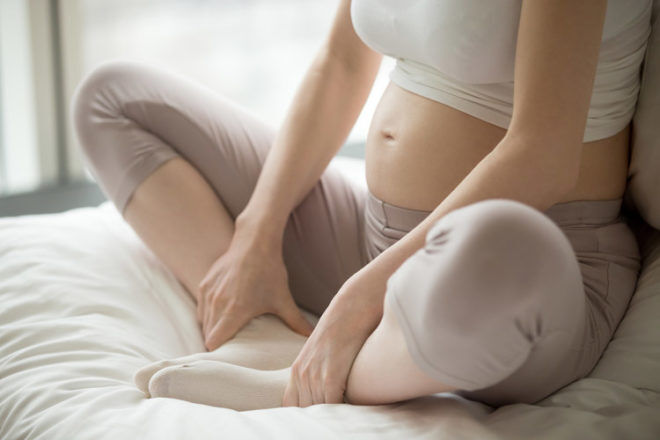
Noticed a strange ‘gap’ between your abdominal muscles, or your pregnant belly looking a little weird? It could be abdominal muscle separation – a really common pregnancy and post-pregnancy condition.
Women’s health physiotherapist and 28 by Sam Wood Pregnancy and Post Natal Expert Chloe Lorback explains what it is, how to avoid it, and what you can do if you have it.
One of the issues that new mums and pregnant women ask me about a lot is tummy muscle separation or diastasis of the rectus abdominis muscle (DRAM). Most people refer to these muscles as the ‘six-pack’ and we need to take care of them during pregnancy to avoid or minimise separation.
What is abdominal muscle separation?
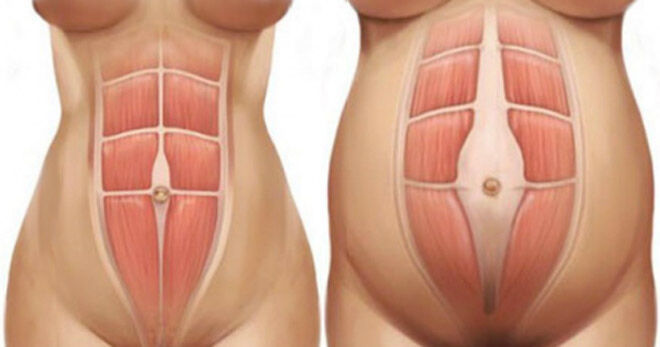
This is a commonly occurring condition, which more than 80% of women experience during pregnancy. It’s particularly common in the second and third trimester when your growing baby puts more pressure on your abdominal muscles, and the muscles stretch to accommodate.
There is a small ligament, called the ‘linea alba’, that connects the two sides of your six-pack muscle. This can stretch as pressure increases from your baby, and create a space between the two halves of the muscle. You might notice this as you try to sit up from lying down in bed or get up from a low couch. Your tummy muscles make a triangle shape at the front. This is a sign that there is some separation, and it’s time to modify your movements to prevent the separation from increasing more than it needs to.
How can I avoid muscle separation in pregnancy?
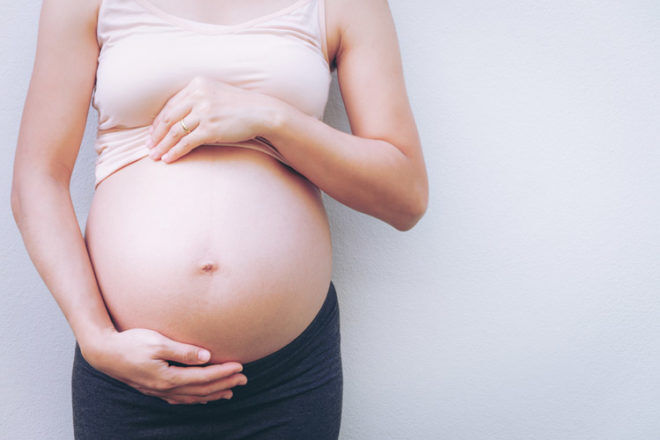
Thankfully, in most cases, the separation resolves naturally after you have your baby. However, if you avoid over-straining these muscles in the first place, while you are pregnant, the separation is minimised. A smaller separation means a faster recovery!
Tips to minimise tummy muscle separation during pregnancy
- Avoid straining your tummy muscles where possible. This means that you need to modify any abdominal exercises. Cut out exercises which work your six-pack or rectus abdominis muscle too much. Crunches, long plank holds and sit-ups place too much pressure on your already stretched rectus abdominis, so it’s time to chose alternative ab exercises. Modified side planks on knees and hands and knees supermans are great alternatives.
- Avoid high impact exercise after approx. 20 weeks, as this puts lots of strain on your tummy and pelvic floor muscles as they try to support your back and pelvic joints.
- Avoid sitting straight up when you get out of bed. Try rolling onto your side.
- Avoid heavy lifting, which we know is really tricky if you have a wriggly toddler! Try and encourage your toddler to give you a cuddle while you are sitting down, rather than having to lift them up.
- Ask your partner for help when carrying heavy stuff. I know you want to bring all the shopping inside in one go, but it could strain your tummy!
There are some risk factors that we really can’t do much about, like having a large baby or having stretchy ligaments (thanks mum for those genes!). But by making small modifications during pregnancy, you can make a big difference to your recovery.
Tips to manage tummy muscle separation after having a baby
- When you get out of bed, roll onto your side to avoid pressure on your rectus abdominis (six pack muscle).
- Avoid sit-ups, crunches, curl-ups, double leg lowers and plank holds until your tummy muscles have recovered. This means that the gap has thickened up and almost closed over. Usually, a one-centimetre gap remains after you have had a baby.
- Wear abdominal support if your tummy muscles feel vulnerable. External support such as Tubigrip (which you can get from your physio), supportive underwear like Spanx or compression shorts to assist recovery.
- Practice your pelvic floor exercises and deep tummy muscle activation exercises daily.
- For active recovery, choose low impact exercises such as pilates, walking, and swimming (swim only after your six-week postnatal check-up) and light weights.
- Wait until at least three months postnatal to run, as your tummy and pelvic floor need time to heal before being able to adequately support your spine and pelvic joints for running.
- Book in to see your women’s health physio if you have any concerns or your recovery has plateaued.
I also find many women benefit from ‘hands-on’ physio treatment to reduce stiffness in the lower back and middle spine, and help to balance out the tension in the muscles. Rest, stress management and nutrition also play a HUGE role in recovery and repair.
Remember it takes nine months for your body to gradually change during pregnancy, and it will commonly take six-nine months for your body to really start feeling strong again
after having a baby.
Be patient…
Take it slowly and gradually (I know you don’t want to hear that) but correct healing and muscle training take time. You deserve to feel amazing and strong, so take your time, follow my advice and you won’t regret it.
Chloe Lorback has always had a passion for women’s health, exercising during pregnancy and the post-natal period. She combined this love with her Pilates studies to establish Fit to Deliver in 2003 and is now also the 28 by Sam Wood Pregnancy and Post Natal Expert. Chloe has three young boys and enjoys the balance of being able to teach Pilates, regularly lecture at Melbourne University, do physio and of course – be a mum!
